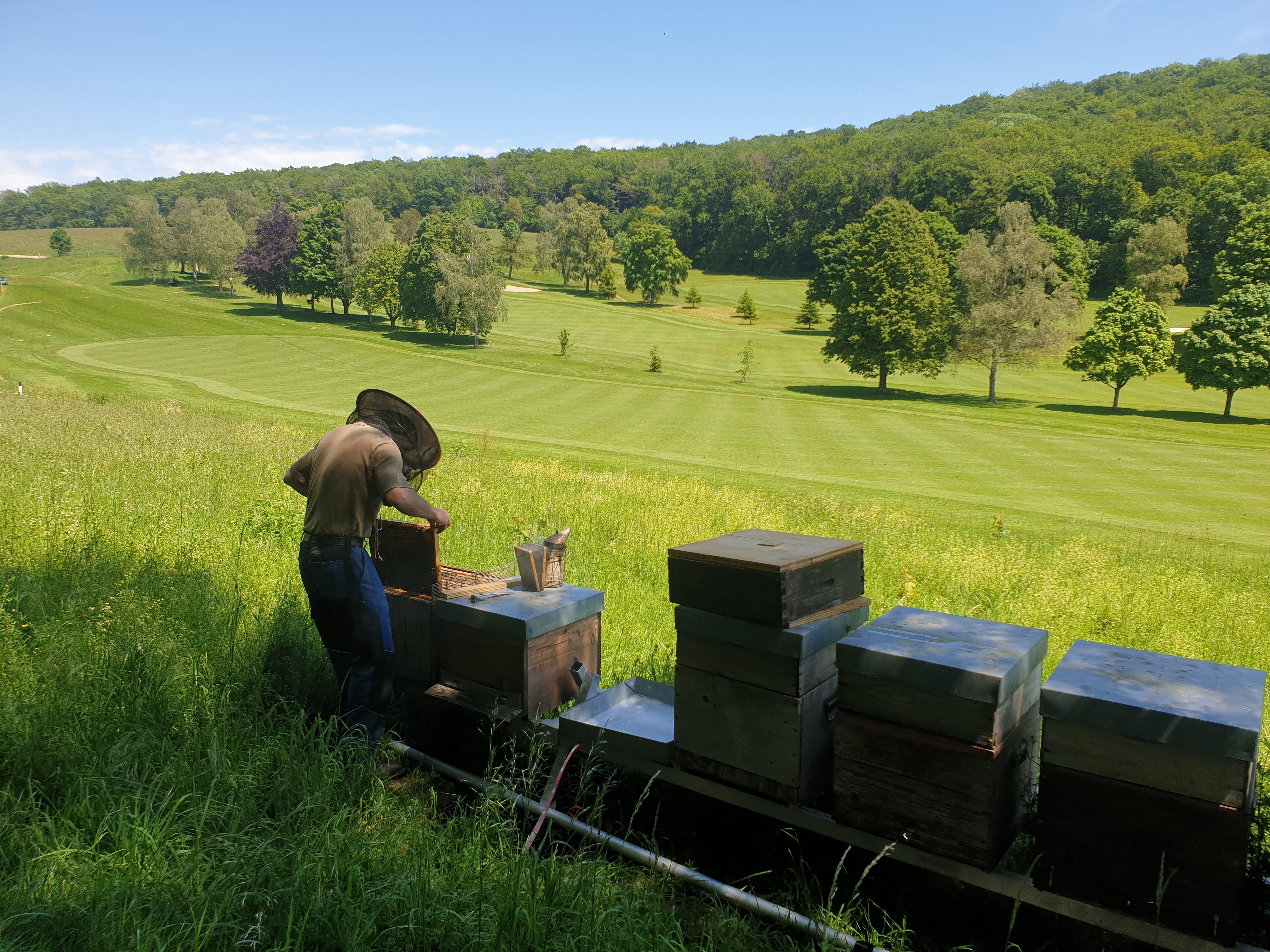SustainabilityGOLF
Sustainable Actions at GCCN
1. In February 2022, the renovation of the Biotop of hole no. 13 with the help of biologists has made it possible to create an ecosystem favorable to many species. Batrachians, dragonflies, insects, butterflies and many species of birds which are, among others, now present in increasing numbers around the Biotop.

2. Since 2018, the late mowing areas (high rough) have been regularly enlarged without impacting the game. Flowery meadows and meadows also promote the development of a beautiful ecosystem.
3. Since 2018, our Head Greenkeeper has reduced the use of phytosanitary products to the strict minimum. No insecticide or herbicide is used on the golf course and only a fungicide is used when disease outbreaks occur on the greens which represent 2% of the land. This is only when the risk of spreading fungi is significant. Here again, it is a high-tech spreader which ensures that the product is surgically spread over the affected areas. For example, moss is removed manually and anti-moss products have no longer been used since 2018. From 2024, any treatment, whether natural or fungicide, will be displayed on the website and on a panel at the secretariat the same day. These treatments require specific climatic conditions, it is unfortunately not possible to plan them.
4. The change to the watering system in 2021 made it possible to water the surfaces very precisely, according to the specific needs of the different areas. If watering the fairways has not resulted in real water savings, it is no longer spread on non-useful surfaces as in the past.

5. Each year the GCCN carries out several re-sowings intended to establish new species which are more resistant to drought and disease. These should allow us to save water in the future. In addition, grass on an equivalent surface area captures twice as much CO2 as a deciduous forest with an average age of 120 years. The greener and denser the lawn, the more efficient it is in its photosynthesis operation. A well-maintained lawn can capture up to 12 tonnes of CO2 per hectare!
6. Thanks to the generosity of many members, a new orchard on hole no. 10 could be achieved and the orchard of hole no. 16 enlarged with tall fruit trees. New trees could also be planted north of hole no. 1 and at hole no. 12.
7. Since 2020, an apiary has been installed on the edge of the forest between holes no. 11 and no. 12. Our members can thus obtain delicious Voëns honey.

8. We have inventoried no less than 2166 trees on the route. Including several remarkable species such as the ancient oak in hole no. 10.
9. Ornithological inventory: an ornithological inventory was carried out in spring 2023 by biologists from the SORBUS association www.sorbus.ch. It was noted that many species, including several threatened, chose to nest on the golf course site.
10. Small gasoline-powered equipment at the end of its life is regularly replaced by electrical equipment (blowers, hedge trimmers, etc.)